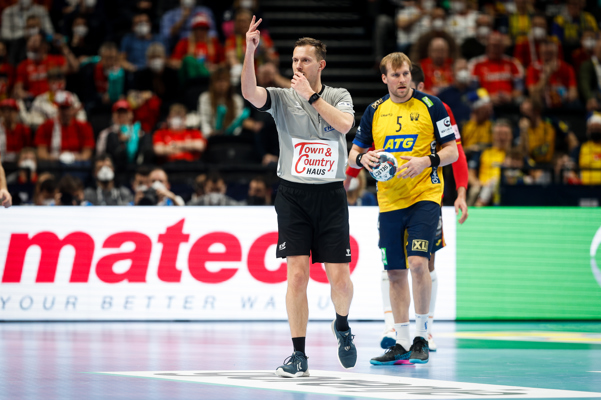The participants of this weekend’s EHF convention for heads of refereeing from member federations will get informed on four updates to the official rules of handball.
Per Morten Sødal, since 2021 the Chairman of the Playing Rules and Referees commission of the International Handball Federation, will explain the changes and rule interpretations, using a lot of video examples.
“The teachers must be educated before they can teach the referees in their federation. This convention is the ideal place to spread the knowledge. I hope for an intense discussion and exchange at the convention,” said Sødal, a former referee and delegate from Norway.
The updates to the existing rules have been tested in several countries and approved by the IHF Congress.
Resin-free ball
From 1 July, a resin-free ball can be used in handball matches. The new balls are smaller and lighter compared to regular balls and have a different kind of grip.
Passive play
Only four instead of six passes will be allowed once referees have raised their arm to announce passive play.
“We have recognized that six passes can take extremely long, and we want to have more attacks in the match,” said Sødal.
The punishment remains the same: more than four passes while passive play has been announced lead to a free throw for the defending team.
New throw-off area
In the current situation, a player must have one foot on the centre line when taking the throw-off. After the rule change on 1 July, the player has to stand with at least one foot in a new throw-off area, a circle with a diameter of four metres which is different in colour from the rest of the court or marked on the floor with tape. The use of the throw-off area is mandatory in all IHF events and professional matches, but otherwise centre-line rule can stay in place.
In case of a throw-off, referees will whistle as soon as the ball and at least one foot of the player are inside the throw-off area. The player can move inside the throw-off area, but not bounce the ball or jump. Opposing players must stay outside the area and cannot touch the ball or opponent until the throw-off has been executed; teammates must be either in their own half or also in the throw-off area. The player must throw the ball within three seconds after the referee has whistled. If he fails to do so, the defending teams gets a free throw.
New is, that defenders no langer must stand three metres away from the thrower; they just have to be outside the throw-off area. They can enter the throw-off area as soon as the throw-off has been executed but are not allowed to block the throw-off.
“The intention of this rule change is to speed up the matches and to make handball more attractive,” Sødal said.

Protection of goalkeepers
Hitting the goalkeeper’s head is currently only punished when it happens from a penalty shot. The rule change now also forbids to hit the goalkeeper’s head from open play if the shooter has been unhindered. The punishment is a two-minute suspension. However, this only applies in open-play situations without defender(s) between the shooter and the goalkeeper, and without foul or push against the attacker.
The updated rule only addresses shots that hot the head directly (“first point of contact”), not shots where the ball has touched another part of the goalkeeper’s body or the floor first. Also, the rule does not apply if the goalkeeper moves his head towards the ball in attempt to make a safe with his head. If a goalkeeper tries to provoke a two-minute suspension or red card, referees shall punish this behaviour progressively.
“The famous Swedish goalkeeper and now goalkeeper coach Mats Olsson is the founder of this rule change. Many goalkeepers suffered from head injuries after they were hit by the ball. We want to protect the health of the goalkeepers. And, therefore, the rule does not mention the face only, but the head,” Sødal said.
“The core statement of this rule change is that the thrower is responsible for his shot. But we want to avoid goalkeepers trying to provoke, for example by pretending they were hit to the head when the ball hit their chest.”
The update leaves the initial rule intact: If a player hits a goalkeeper in the head with a penalty shot, or a defender with a direct free throw, he will receive a red card and be sent off.
The changes to the rules become valid on 1 July 2022, though will already be applied at the IHF Women’s Junior World Championship in Slovenia, which starts end of June and ends on 3 July.
photos © 2022 Uros Hocevar, Jozo Cabraja | kolektiff


